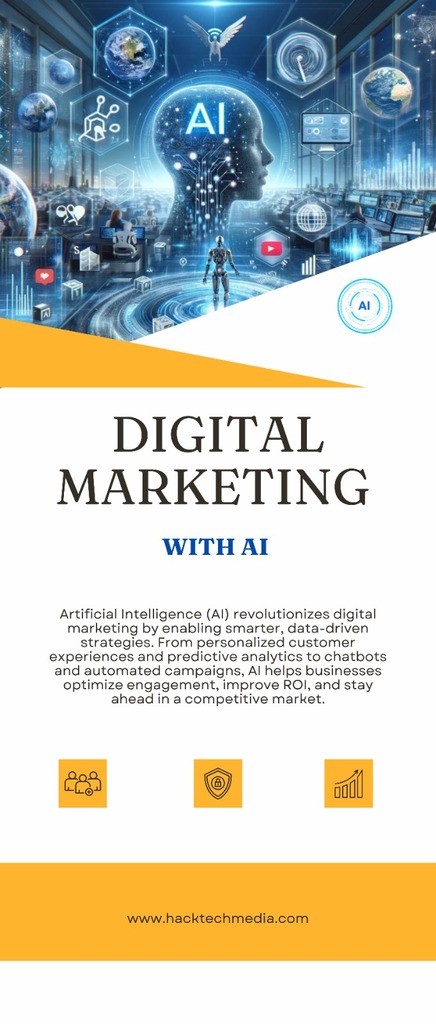
Introduction: Unlocking Growth through Data
In today’s digital landscape, data isn’t just a byproduct of business—it’s the cornerstone of strategic growth. Companies leverage data analytics and business intelligence (BI) to turn raw data into meaningful insights, driving more informed decision-making and better business outcomes. Whether it’s predicting market shifts, optimizing resources, or identifying growth opportunities, BI and data analytics allow companies to stay agile, competitive, and innovative.
What Is Data Analytics and Business Intelligence?
Data analytics and business intelligence go hand in hand, both focused on transforming raw data into actionable insights. While data analytics digs deep into specific datasets to reveal trends and patterns, BI provides a broader perspective on business performance by integrating data from multiple sources. Together, they empower organizations to make data-backed decisions that support growth objectives.
The Role of Data in Growth-Oriented Decision Making
Data-driven decision making is the process of making business choices based on factual data rather than intuition alone. This approach ensures that every strategy is grounded in reality, reducing risks and optimizing outcomes. By leveraging data insights, companies can spot trends, gauge customer needs, and adjust strategies to meet demand. Ultimately, this translates to more precise, efficient, and impactful business decisions.
Top Analytics Tools and BI Strategies
The right tools and strategies are critical for effective data analytics and BI implementation. Popular analytics tools include Tableau, Power BI, and Google Analytics, which offer advanced capabilities in data visualization and reporting. BI strategies focus on understanding organizational goals, setting measurable objectives, and selecting metrics that align with growth targets. Using these tools and strategies, businesses can streamline operations and pinpoint areas for improvement.
Using Predictive Analytics for Proactive Business Strategies
Predictive analytics uses historical data and algorithms to forecast future outcomes, providing businesses with foresight to act on upcoming trends. By applying predictive models, companies can identify potential growth opportunities, anticipate market demand, and even prepare for challenges. This forward-thinking approach helps organizations stay one step ahead in a competitive market, making proactive adjustments rather than reactive ones.
Data Visualization: Making Insights Accessible

Data visualization is a powerful aspect of data analytics, translating complex data sets into understandable visual formats like charts, graphs, and dashboards. With clear visualization, insights become accessible to teams across departments, facilitating quicker understanding and more cohesive decision-making. Visual tools not only enhance data comprehension but also allow stakeholders to grasp the bigger picture, essential for strategic planning.
Key Performance Indicators (KPIs): Tracking Success
KPIs are measurable values that help organizations track their progress toward specific goals. In business intelligence, KPIs are crucial for understanding whether current strategies align with growth objectives. Common KPIs include customer retention rate, revenue growth, and operational efficiency metrics. By consistently monitoring these indicators, businesses can evaluate and refine their tactics, ensuring alignment with long-term goals.
Integrating Data for a Comprehensive View
Data integration is essential for obtaining a holistic view of business performance. It involves combining data from various sources, such as sales, marketing, and customer service, to create a unified picture. With integrated data, companies can uncover connections between different areas of the business, enhancing the accuracy and depth of insights. This comprehensive view is instrumental in making well-rounded, data-driven decisions that fuel growth.
Customer Insights and Market Analysis
Understanding customer behavior and market trends is vital for any business aiming for growth. Data analytics provides insights into customer preferences, buying patterns, and feedback, enabling more targeted marketing and improved customer experiences. Market analysis, on the other hand, helps businesses stay competitive by evaluating industry trends and competitor performance. Together, these insights drive customer loyalty and expand market reach.
Implementing Data Governance for Sustainable Growth
Data governance is the framework that ensures data quality, security, and compliance within an organization. With robust data governance, businesses maintain accuracy and integrity in their data, supporting reliable analytics and BI practices. Effective governance also involves establishing policies for data access, storage, and usage, minimizing risks while maximizing the value of data as an asset.
Optimizing Business Processes with Data Analytics
One of the critical advantages of data analytics is its ability to optimize business processes. Through data, companies can assess their workflows and identify bottlenecks or inefficiencies that may be hindering productivity. For example, in manufacturing, data analytics can track machine performance and maintenance needs, minimizing downtime. In retail, data analytics can reveal insights into stock levels, allowing better inventory management to meet customer demands without overstocking. By consistently analyzing operational data, companies can streamline processes, reduce waste, and enhance overall productivity, translating directly into improved profitability.
Enhancing Employee Performance through Data-Driven Insights
Employee performance is another area where data analytics can make a significant impact. By analyzing key performance metrics, organizations can identify areas where employees excel or may need additional training. This approach promotes a culture of continuous improvement and personalized professional development. BI tools can also track the effectiveness of training programs and provide insight into how employee engagement and productivity influence business outcomes. By using data to support workforce management, companies empower their teams to achieve better results, fostering a more skilled, satisfied, and efficient workforce.
Improving Customer Experience with Data-Driven Personalization
In today’s market, customer experience is paramount, and data analytics allows companies to personalize interactions and build stronger customer relationships. By analyzing purchase history, browsing behavior, and feedback, businesses can tailor recommendations, promotions, and communications to each customer’s preferences. This personalized approach improves customer satisfaction and fosters loyalty. For example, e-commerce platforms leverage data to offer targeted product recommendations, while service providers use data to customize support responses. As a result, data-driven personalization enhances the customer journey and contributes to long-term loyalty and retention.
Gaining Competitive Advantage through Market Analysis
Staying ahead in a competitive market requires a clear understanding of industry trends, customer demands, and competitor strategies. Market analysis—powered by BI tools—equips businesses with insights into emerging trends, allowing them to adjust their offerings and stay relevant. Companies can analyze competitor performance, pricing strategies, and customer feedback to identify opportunities for differentiation. With data-driven market analysis, organizations can position themselves strategically, launching products or services that meet customer needs while outpacing competitors. This advantage is particularly beneficial for brands in rapidly evolving industries, such as technology and e-commerce.
Data-Driven Innovation: Fueling New Product Development
Innovation is essential for growth, and data analytics plays a critical role in the development of new products and services. Through BI tools, businesses can analyze customer feedback, industry trends, and market gaps, identifying opportunities for innovation. Data helps companies understand customer pain points, allowing them to create products that address specific needs and drive market interest. Additionally, predictive analytics can gauge the success potential of new offerings before launch, enabling businesses to make informed decisions on resource allocation. With data at the forefront of innovation, organizations are better positioned to bring successful, customer-centric products to market.
Ensuring Compliance and Security with Data Governance
As data becomes a valuable asset, protecting it is a priority. Data governance is essential to maintaining security, compliance, and ethical standards within an organization. By establishing clear policies on data access, usage, and storage, companies protect sensitive information and avoid regulatory breaches. Data governance frameworks also ensure data accuracy and consistency, essential for reliable decision-making. For example, companies in finance and healthcare face strict regulatory requirements, and effective data governance enables compliance while supporting secure BI practices. This proactive approach to data management not only safeguards the organization’s reputation but also reinforces customer trust.
Summary: Building a Data-Driven Culture for Sustainable Success
Transitioning to a data-driven culture requires commitment from every level of an organization. Leaders play a key role in championing data usage and ensuring that resources, training, and tools are accessible to all employees. By embedding data analytics and business intelligence into daily operations, companies make informed, strategic decisions that foster growth and resilience. When organizations embrace a data-driven culture, they create a foundation for long-term success, with the agility to adapt to changing markets, the insight to improve customer experience, and the foresight to innovate continuously.
Call to Action: Embrace Data Analytics and BI for a Future-Ready Business
For businesses that aspire to lead in their industries, investing in data analytics and business intelligence is not optional—it’s essential. By leveraging data, companies can achieve new levels of efficiency, customer engagement, and market positioning. Start exploring analytics tools, identify key metrics, and create a data governance strategy to build a business that is both growth-oriented and resilient.
This comprehensive guide demonstrates how data analytics and business intelligence are indispensable for companies looking to turn data into actionable strategies that drive growth and foster long-term success. By implementing data-driven decision-making practices and embracing tools that support analytics and BI, organizations lay the groundwork for a future that’s informed, innovative, and competitive.
Conclusion: Leveraging Data for Long-Term Success
Incorporating data analytics and business intelligence into growth strategies allows businesses to harness the full potential of their data. By using BI tools, predictive analytics, and data governance, companies not only enhance their operational efficiency but also unlock new pathways to sustainable growth. With data at the heart of decision-making, businesses can confidently navigate challenges, seize opportunities, and thrive in a dynamic marketplace.
Written By – Seema Kanojiya







